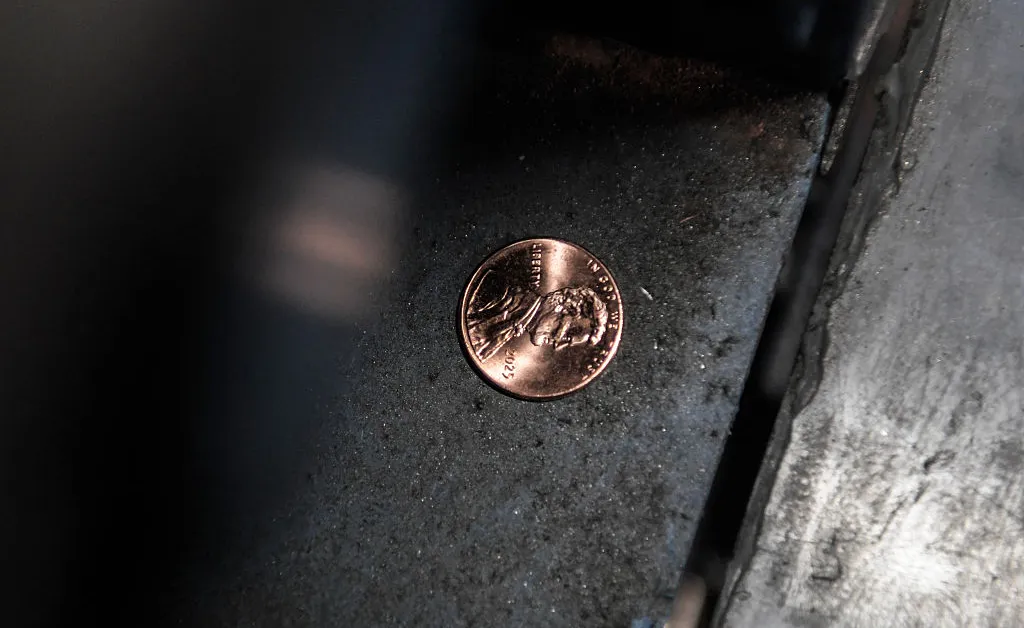
The penny has died. At the age of 232, the iconic coin’s final batch was minted in Philadelphia on Wednesday. But while the copper-plated-zinc currency is dead, it is not yet gone: the estimated 250 billion pennies already in circulation will persist as legal tender, leaving customers and businesses to navigate a newly limited economy of cents.
[time-brightcove not-tgx=”true”]
Federal officials have spent months winding down penny production after President Donald Trump ordered Treasury Secretary Scott Bessent to stop making new ones in February.The motive for killing the coin? To quell unnecessary government spending, Trump said; the Treasury Department announced in May that the cost of producing one penny was nearly four times its value and that the government would stop minting more once the blank templates used to make them ran out. Since then, Federal Reserve locations have reported depleted supplies of pennies, and as of this week, more than 100 of the 165 coin distribution sites across the country are penniless.
Even before production completely ended this week, a shortage of pennies in circulation began causing businesses to come up short on change. Many retailers around the country have reported that they’re often being forced to round down when customers pay with cash, costing them just a matter of cents on each transaction but a much more significant amount as the deficits add up.
The lack of federal guidance on how to handle such transactions without the correct change has created complications and uncertainty for retailers, said the National Retail Federation, an industry trade organization which surveyed its members on how they’re dealing with the shortage.
A survey conducted by another trade association, the Retail Industry Leaders Association (RILA), last week also found that thousands of retailers are experiencing shortages of pennies and are seeking guidance on how to handle cash transactions. A quarter of the companies surveyed said that more than 1,000 of their store locations were operating without pennies, while two-thirds said that they are rounding down transactions to benefit customers, costing millions of dollars.
Other countries like Canada, which discontinued the production of its penny in 2012, have adopted guidance amid similar shifts. The Canadian government advised retailers to round cash transactions to the nearest five-cent increment when pennies weren’t available.
Such federal guidance, the RILA said, is necessary to prevent confusion arising from a network of differing state and local laws.
In October a coalition of trade associations representing thousands of businesses urged congressional banking committees to take swift action to address the imminent penny shortage.
“These businesses—large and small— must be able to continue their commitment to our communities in ways that are fair to everyone and avoid unintended operational hurdles that are being caused by the rapid loss of the U.S. penny,” the group wrote in a letter.
“If these remedies are not addressed in short order, it will be challenging to legally engage in cash transactions with customers in growing swaths of the country,” they said.
Other major businesses have resorted to stockpiling pennies, even urging their employees to gather rolls of the coins when they go to the bank.
For consumers, meanwhile, economists expect that the effect of the penny’s discontinuation will be negligible, likely amounting to just minor differences in the amount they pay in certain cash transactions.
The United States Mint expects to save $56 million per year without the coins’ production.
Lawmakers have tried to get rid of the penny in the past, as far back as 1989, when Congress introduced legislation to round cash transactions to the nearest nickel.
President Barack Obama said “we’re spending more money on something that people don’t actually use,” in 2013; a decade later, a bill aimed at changing the composition of the coin to cheaper material was introduced, but failed.
In 2024, the penny accounted for 57% of the 5.61 billion coins in circulation. The government will continue to produce numismatic versions of the penny, or ones intended for collectors and historical purposes rather than regular circulation, in limited quantities. Melting, treating and exporting pennies is mostly prohibited under law.
The post Goodbye, Penny: What the End of the Coin’s Production Means for Customers and Businesses appeared first on TIME.




